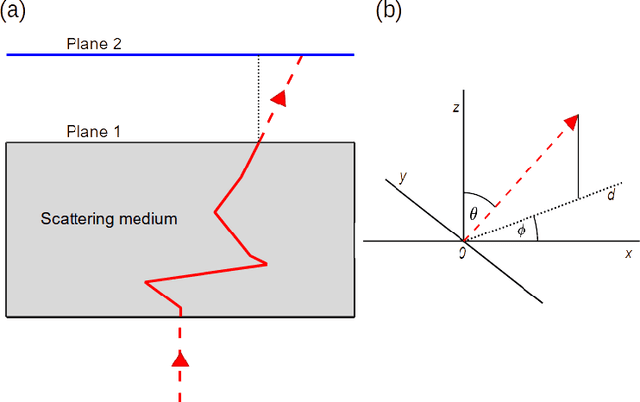Andrew Parkes
School of Computer Science, University of Nottingham, Nottingham, UK
Application of RESNET50 Convolution Neural Network for the Extraction of Optical Parameters in Scattering Media
Apr 25, 2024


Abstract:Estimation of the optical properties of scattering media such as tissue is important in diagnostics as well as in the development of techniques to image deeper. As light penetrates the sample scattering events occur that alter the propagation direction of the photons in a random manner leading degradation of image quality. The distribution of the scattered light does, however, give a measure of the optical properties such as the reduced scattering coefficient and the absorption coefficient. Unfortunately, inverting scattering patterns to recover the optical properties is not simple, especially in the regime where the light is partially randomized. Machine learning has been proposed by several authors as a means of recovering these properties from either the back scattered or the transmitted light. In the present paper, we train a general purpose convolutional neural network RESNET 50 with simulated data based on Monte Carlo simulations. We show that compared with previous work our approach gives comparable or better reconstruction accuracy with training on a much smaller dataset. Moreover, by training on multiple parameters such as the intensity distribution at multiple planes or the exit angle and spatial distribution one achieves improved performance compared to training on a single input such as the intensity distribution captured at the sample surface. While our approach gives good parameter reconstruction, we identify factors that limit the accuracy of the recovered properties, particularly the absorption coefficient. In the light of these limitations, we suggest how the present approach may be enhanced for even better performance.
Direct Zernike Coefficient Prediction from Point Spread Functions and Extended Images using Deep Learning
Apr 24, 2024Abstract:Optical imaging quality can be severely degraded by system and sample induced aberrations. Existing adaptive optics systems typically rely on iterative search algorithm to correct for aberrations and improve images. This study demonstrates the application of convolutional neural networks to characterise the optical aberration by directly predicting the Zernike coefficients from two to three phase-diverse optical images. We evaluated our network on 600,000 simulated Point Spread Function (PSF) datasets randomly generated within the range of -1 to 1 radians using the first 25 Zernike coefficients. The results show that using only three phase-diverse images captured above, below and at the focal plane with an amplitude of 1 achieves a low RMSE of 0.10 radians on the simulated PSF dataset. Furthermore, this approach directly predicts Zernike modes simulated extended 2D samples, while maintaining a comparable RMSE of 0.15 radians. We demonstrate that this approach is effective using only a single prediction step, or can be iterated a small number of times. This simple and straightforward technique provides rapid and accurate method for predicting the aberration correction using three or less phase-diverse images, paving the way for evaluation on real-world dataset.
 Add to Chrome
Add to Chrome Add to Firefox
Add to Firefox Add to Edge
Add to Edge